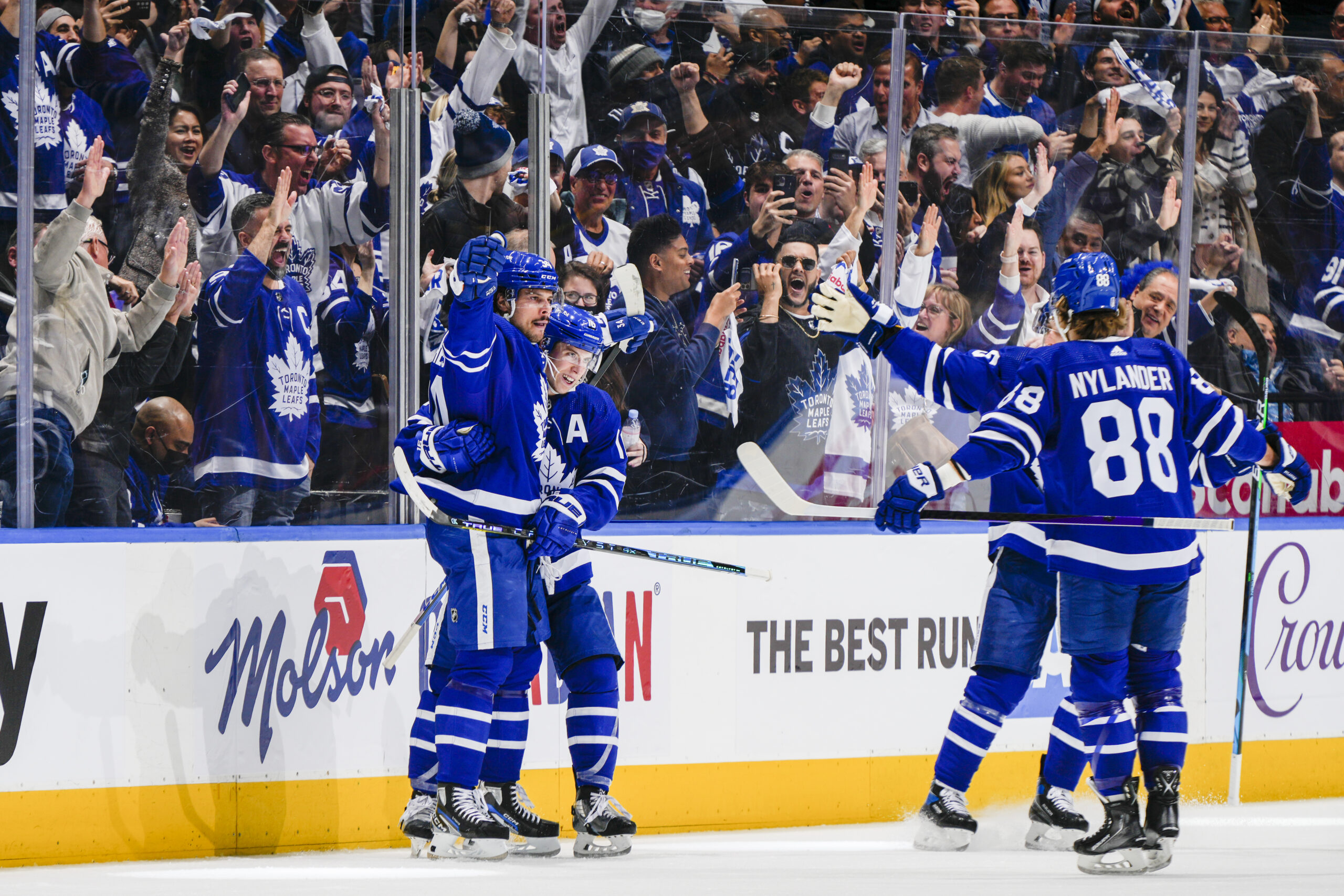Sportsnet’s Elliotte Friedman suggested on a recent podcast episode that a narrative that the Toronto Maple Leafs are little more than their “core four” has started to bother players on the team. Not thrilled about the attention drawn by that storyline, new GM Brad Treliving already made it clear in his first media avail after being hired that doing his best work won’t be about focusing solely on four players. It will be about giving his undivided attention to the 23 players who suit up each and every night.
While Auston Matthews, Mitch Marner, William Nylander, and John Tavares combined for 51% of the Leafs’ regular season goals over the last five seasons, there’s apparently going to be a push to de-emphasize the focus on this core and make the success of the organization more about the 19 other players who surround them. That sounds nice, but is it doable?
Related: Maple Leafs & Capitals Could Connect on a Draft Day Deal
Unfortunately, probably not, at least not without a trade.
The “Core Four” Have Too Much Leverage
It’s going to be hard to spin the storyline away from the top-four forwards on the Leafs when the bulk of what the media wants to talk about has to do with them. And, because so much of the success or failure of the club is reliant upon all four being productive, the Leafs have little choice but to cater to them or the media to discuss them.

That Matthews and Nylander are close to extensions –or in the process of negotiating them — only enhances the issues as the focus on their respective situations becomes even more magnified. Pretty soon, these two players will be able to make it all about themselves. As Dave Poulin of the Toronto Star writes, contract talks are a big part of every franchise’s media coverage, but he explains:
Nowhere has this been more scrutinized than in Toronto, where full no-move clauses will kick in for star players Auston Matthews and Mitch Marner on Canada’s birthday, while teammate William Nylander gains limited protection. Matthews and Nylander will also be eligible for extensions on that date, with just one year left on their contracts. Marner has two years remaining.
source – ‘Like Matthew Tkachuk and Jack Eichel, many NHLers aren’t waiting to control their fate’ – Dave Poulin – Toronto Star – 06/11/2023
In Toronto, should Matthews sign the highest-ever NHL salaried contract, he’s going to be talked about. If Nylander holds the Leafs to a huge raise, it’s going to be discussed. If both get significant raises, it means less money to go around for the rest of the roster and more need for the top-tier performers to produce. If neither wants to be moved after this happens, the Leafs are stuck and it’s all anyone is going to talk about.
The Best Way To Shift the Focus Is To Remove a Piece from the Equation
If the Toronto Maple Leafs want fans, media, and players to talk less about the top four forwards on the roster, the best plan is to move on from one of them. Treliving can fetch a nice return for Nylander and he’ll likely get a king’s ransom for Matthews. Trade either one and get two useful pieces back, the conversation immediately shifts from the “core four” to the “fab five” or the “super six”. Still not ideal, it’s a whole lot better than the narrative the team has faced for multiple straight seasons.
Or, if the Leafs pick up significant draft capital, the conversation turns as much to the future development of some top-tier prospects as it does about the current players on the ice.
Maple Leafs Need a New Identity
Friedman says he’s hearing the team wants to build more of an identity that isn’t tied to the big guns. He noted, “I believe some of the depth players may have talked about this; is they feel it gets in the way of forming a team identity.” Noting that they’ll never fully escape the conversation, he asked, “…can you do a better job of creating an identity around some of the other players on the roster?” Yes. Yes, you can.
Trade one of them, bring in someone with some sandpaper that could care less about the attention the other three receive and let that player or players help the rest of the locker room become a cohesive unit that doesn’t wait for one of the “core four” to show up and perform.
